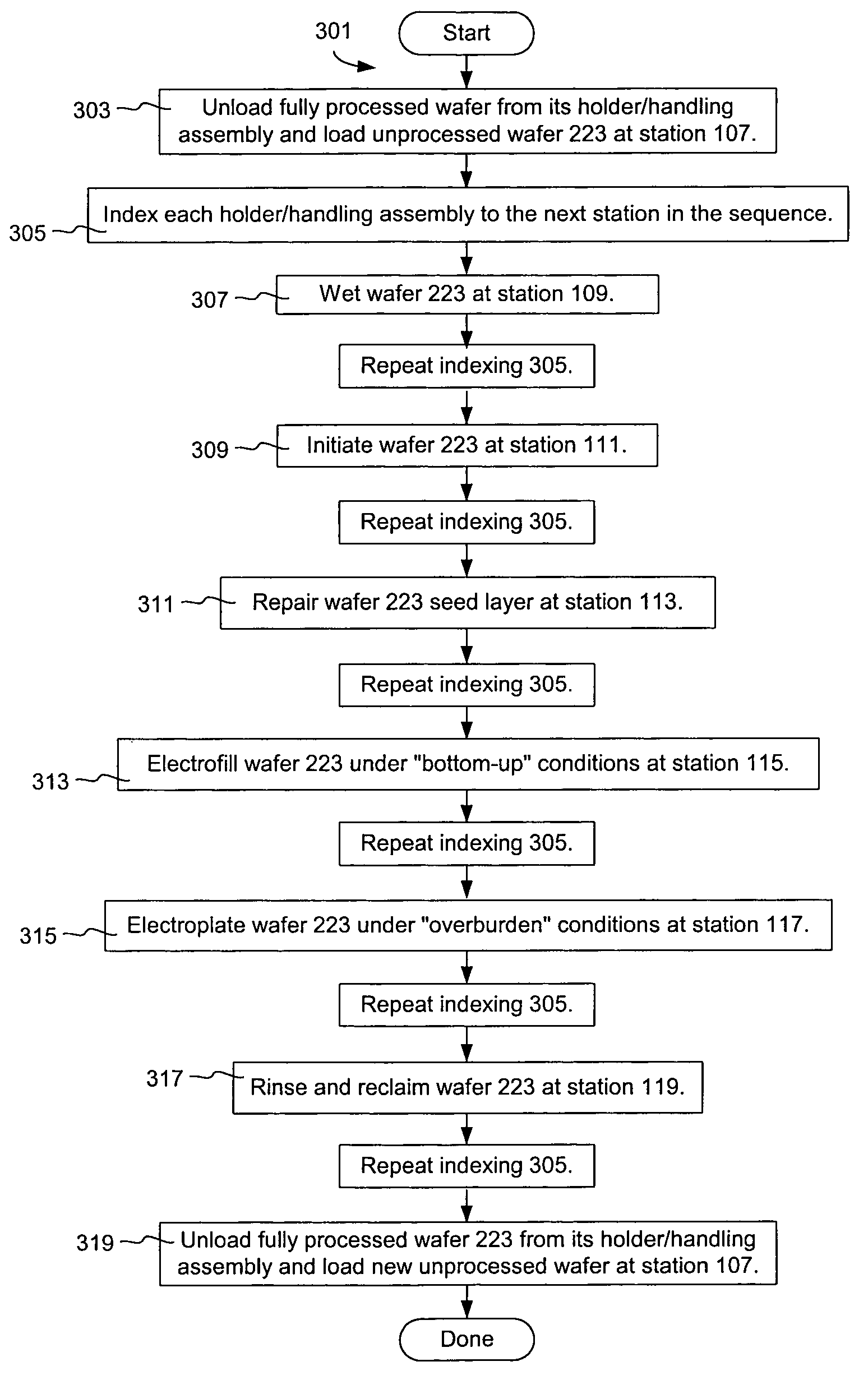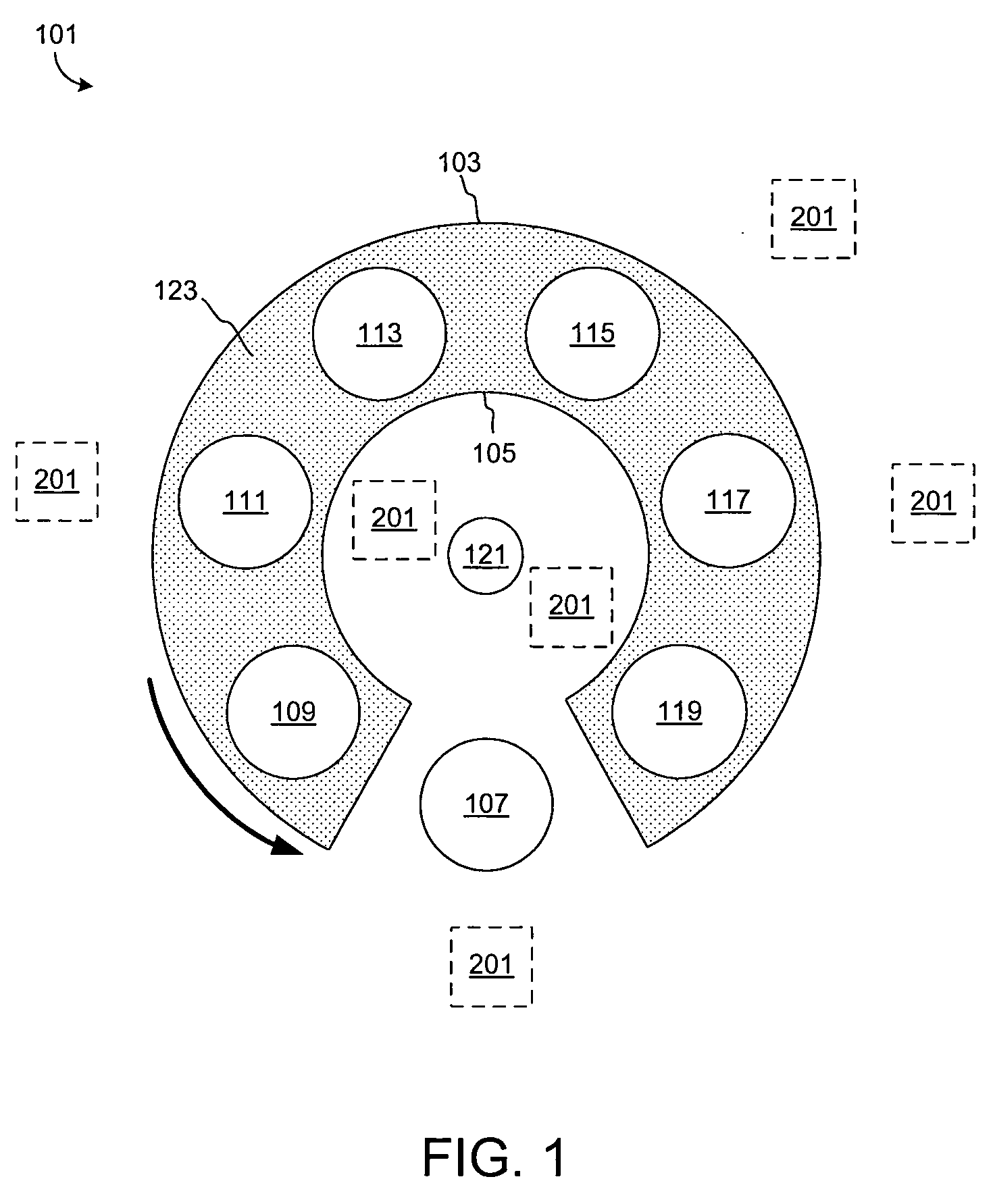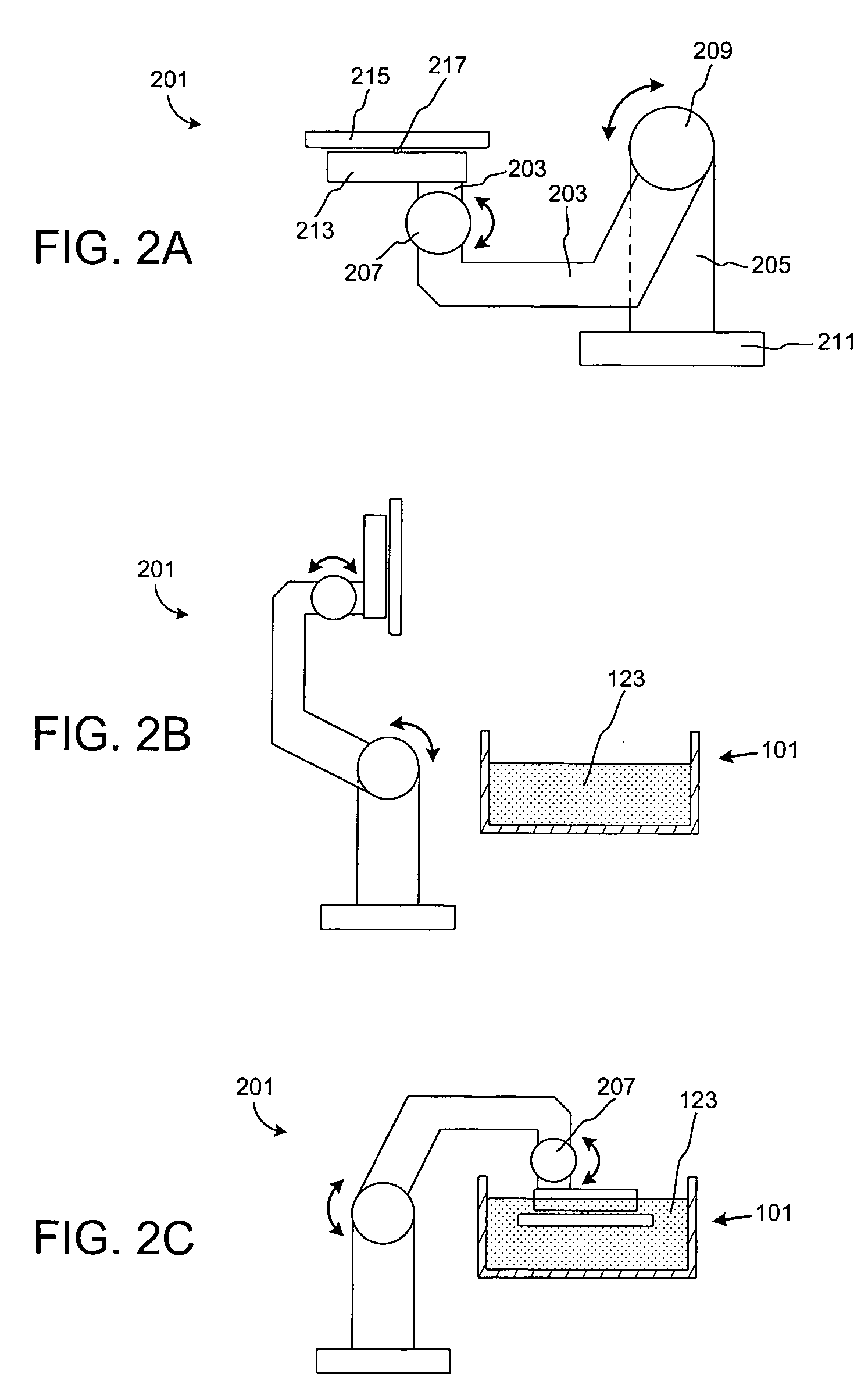Sequential station tool for wet processing of semiconductor wafers
a technology of semiconductor wafers and station tools, applied in the field of sequential wet processing of silicon wafers, can solve the problems of difficult maintenance of batch uniformity, difficult balance of software logic, and critical issues in wafer throughput and wafer uniformity, so as to improve wafer throughput, process and hardware flexibility, and reproducibility of wafer to wafer
- Summary
- Abstract
- Description
- Claims
- Application Information
AI Technical Summary
Benefits of technology
Problems solved by technology
Method used
Image
Examples
Embodiment Construction
[0023]In the following detailed description of the present invention, numerous specific embodiments are set forth in order to provide a thorough understanding of the invention. However, as will be apparent to those skilled in the art, the present invention may be practiced without these specific details or by using alternate elements or processes. For example, one aspect of the apparatus of the invention is depicted as a radial (carousel) arrangement; this aspect of the invention could be embodied in a linear (straight track) arrangement, or some combination or variation of either arrangement. In some descriptions herein, well-known processes, procedures, and components have not been described in detail so as not to unnecessarily obscure aspects of the present invention.
[0024]One method of the invention features electroplating a metal such as copper on a semiconductor wafer by sequentially exposing the wafer to distinct sub-processes of the overall electroplating process. These are ...
PUM
| Property | Measurement | Unit |
|---|---|---|
| “idle” time | aaaaa | aaaaa |
| “idle” time | aaaaa | aaaaa |
| angle | aaaaa | aaaaa |
Abstract
Description
Claims
Application Information
 Login to View More
Login to View More - R&D
- Intellectual Property
- Life Sciences
- Materials
- Tech Scout
- Unparalleled Data Quality
- Higher Quality Content
- 60% Fewer Hallucinations
Browse by: Latest US Patents, China's latest patents, Technical Efficacy Thesaurus, Application Domain, Technology Topic, Popular Technical Reports.
© 2025 PatSnap. All rights reserved.Legal|Privacy policy|Modern Slavery Act Transparency Statement|Sitemap|About US| Contact US: help@patsnap.com



